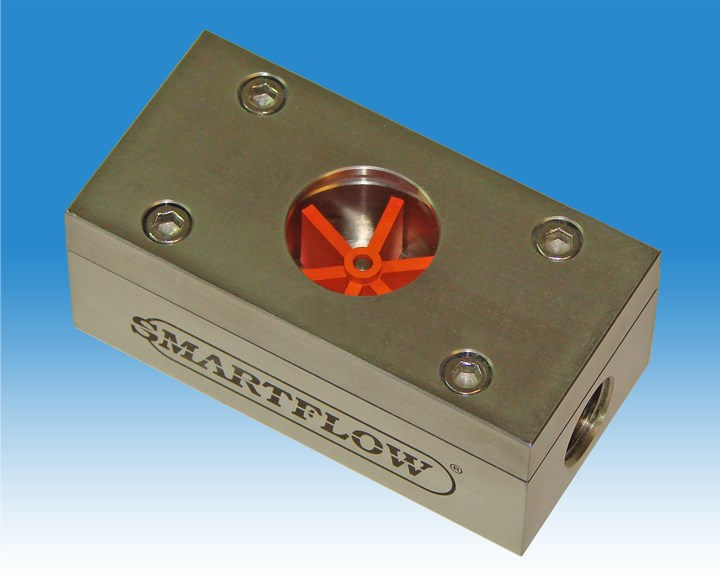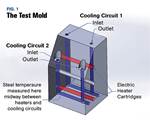High-Temperature, Low-Flow Indicator for Mold-Cooling Applications
Burger & Brown Engineering has released a new high-temperature low-flow indicator to monitor flow inside critical, restricted cooling paths such as those with bubblers or baffles.
Burger & Brown Engineering says the new high-temperature low-flow indicator is intended to monitor flow in high-temperature cooling channels that are susceptible to scale buildup generated by the cooling media. If scale builds up and blocks these cooling channels, the indicator’s rotor will stop moving, providing a visual indication of loss of media movement.
The compact indicator is comprised of a stainless steel body with 3/8-in NPT or 3/8-in BSPP threaded connections. A high-visibility impeller sits behind a high-temperature glass window providing visual indication of flow.
The new flow indicator is designed to operate between 0.3 and 4 liters/min (0.08 to 1 gpm) at maximum temperature of 204 C (400 F), and maximum pressure of 17.2 bar (250psi). The indicator is suitable for use with high-pressure hot-water mold-cooling systems.
Burger & Brown says the new flow indicator operates at a much lower flow rate than existing high temperature flow meters, solving the problem of unknown cooling conditions inside critical channels. Optional high pressure and temperature flow regulators can be added to provide molders fine adjustment to cooling circuit flow rates.

Burger & Brown’s new flow indicator provides visual evidence of flow, or a lack of flow, in critical cooling paths.
Photo Credit: Burger & Brown
Related Content
-
Optimizing Pack & Hold Times for Hot-Runner & Valve-Gated Molds
Using scientific procedures will help you put an end to all that time-consuming trial and error. Part 1 of 2.
-
How to Design Three-Plate Molds: Part 5
There are many things to consider, and paying attention to the details can help avoid machine downtime and higher maintenance costs. In this installment, the focus is on design and placement of sucker/puller pins.
-
Where and How to Vent Injection Molds: Part 3
Questioning several “rules of thumb” about venting injection molds.


